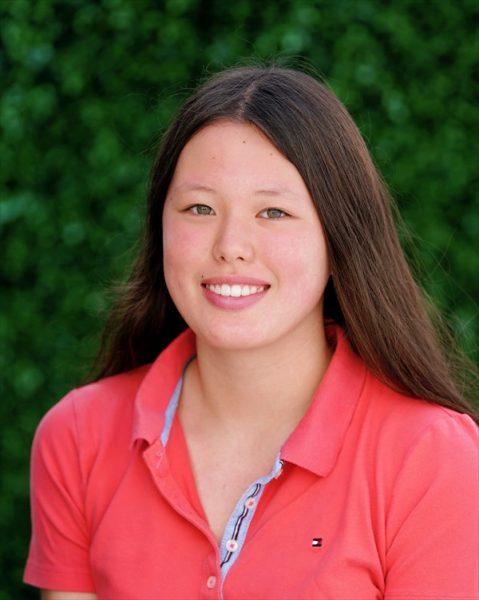Outdoor eating options opened on Fillmore Street
Freshmen Catherine Fox, Sarah Rasic, Alex Chua and Jalysa Jones sit in a parklet at The Snug on Fillmore Street on a Tuesday morning. Parklets have existed on San Francisco streets since 2010, but are now being used for restaurants to stay open and serve customers on-site as health restrictions have become looser during the coronavirus pandemic.
April 20, 2021
On spring afternoons, despite the still boarded-up and empty boutiques on Fillmore Street, people are walking by, drivers are trying to find parking spots that have been replaced by parklets, and restaurants and bakeries are bustling with dining in newly-constructed outdoor seating areas.
Parklets, outdoor seating sanctioned off in former street parking spaces, have been in San Francisco for years but are now being reimagined to make dining safer. Many restaurants are constructing their own outdoor eating areas.
“I was a little scared at first because of COVID-19,” freshman Catherine Fox said about eating out again, “but I enjoyed being able to dine outdoors with the protocols that are set up.”
The San Francisco Department of Public Health guidelines for outdoor dining includes tables placed at least 6 feet apart, servers wearing masks at all times, parklets not being fully enclosed, patrons wearing masks when not eating or drinking, and tables seating no more than six people.
“I would feel more comfortable eating at a restaurant where the parklet has a lot of open space,” freshman Zara Kirk said. “I prefer when not that many people are sitting close together because of the risk of transmission.”
Eating outdoors has a lower risk than eating indoors, according to the Centers for Disease Control and Prevention. Apizza at Fillmore and California streets offers an unenclosed dining space with walls surrounding the entire space, while other parklets have half walls surrounding each table.
“I have to be a good distance from other people,” Fox said. “I’m not really comfortable being within 6 feet with my mask off if we are strangers.”
At Roam Artisan Burgers, at Fillmore and Pine streets, tables are 6 feet apart with plexiglass panels in between each table.
“The restaurant seems safer when diners keep their masks on when they’re not eating,” Kirk said. “I would definitely try to look for restaurants that follow this guideline about mask wearing.”
Many restaurants post signs telling diners to keep masks on when not eating or drinking, and when speaking to servers and staff. Most diners abided by the guideline at Roam Artisan Burgers and apizza on March 3, but at some patrons kept their masks down throughout the time in the parklet.
“The City is making it easier for businesses to use outdoor space,” according to the City and County of San Francisco. “It is safer to do business outside during the coronavirus outbreak. Businesses can reopen or expand into the sidewalk and parking lane while we keep our residents healthy and safe.”
Under the San Francisco Department of Public Health guidelines updated on March 2, tables may only seat a maximum of six people from three or fewer households. Jane on Fillmore, at Fillmore and California streets has seats for three customers at each table and allows patrons to request more chairs.
“Eating outside brings me hope that we will be reaching normal life soon,” Fox said.










